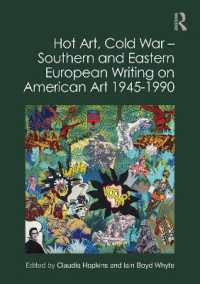Full Description
In the Valley of Oaxaca in Mexico's Southern Highland region, three facets of sociocultural life have been interconnected and interactive from colonial times to the present: first, community land as a space to live and work; second, a civil-religious system managed by reciprocity and market activity wherein obligations of citizenship, office, and festive sponsorships are met by expenditures of labor-time and money; and third, livelihood. In this book, noted Oaxacan scholar Scott Cook draws on thirty-five years of fieldwork (1965-1990) in the region to present a masterful ethnographic historical account of how nine communities in the Oaxaca Valley have striven to maintain land, livelihood, and civility in the face of transformational and cumulative change across five centuries.
Drawing on an extensive database that he accumulated through participant observation, household surveys, interviews, case studies, and archival work in more than twenty Oaxacan communities, Cook documents and explains how peasant-artisan villagers in the Oaxaca Valley have endeavored over centuries to secure and/or defend land, worked and negotiated to subsist and earn a living, and striven to meet expectations and obligations of local citizenship. His findings identify elements and processes that operate across communities or distinguish some from others. They also underscore the fact that landholding is crucial for the sociocultural life of the valley. Without land for agriculture and resource extraction, occupational options are restricted, livelihood is precarious and contingent, and civility is jeopardized.
Contents
List of Maps and Tables
Preface
Acknowledgments
Introduction
1. The Teitipac Communities: Peasant-Artisans on the Hacienda's Periphery
2. Hacienda San Antonio Buenavista from Two Perspectives: Hacendado and Terrazguero
3. San Juan Teitipac: Metateros Here and There
4. San SebastiÁn Teitipac: Metateros and Civility
5. San Lorenzo Albarradas, XaagÁ, and the Hacienda Regime
6. "Castellanos" as Plaiters and Weavers: San Lorenzo Albarradas and XaagÁ
7. The Jalieza Communities: Peasant-Artisans with Mixed Crafts
8. Santa Cecilia Jalieza: Defending Homeland in Hostile Surroundings
9. Magdalena OcotlÁn: From Terrazgueros to Artisanal Ejidatarios
10. Magdalena's Metateros: Servants of the Saints and the Market
11. Conclusion
Photo Essay
Glossary
Notes
Bibliography
Index








